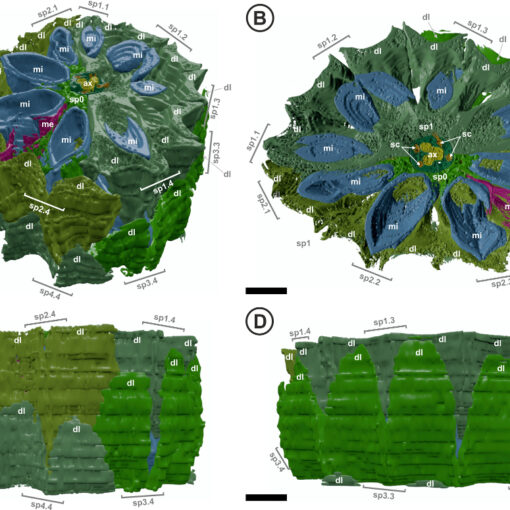Type:
Peer Reviewed Research Paper
Journal:
American Journal of Botany
Year:
June 1, 2015
Authors:
Spencer ART, Mapes G, Bateman RM, Hilton J, Rothwell GW
DOI
http://dx.doi.org/10.3732/ajb.1500121
Abstract:
Premise of the study: Triassic and Jurassic fossils record structural changes in conifer seed cones through time, provide the earliest evidence for crown-group conifer clades, and further clarify sister-group relationships of modern conifer families. A new and distinct seed-cone from the Isle of Skye in western Scotland provides the oldest detailed evidence for the ancestral morphology of the phylogenetically contentious family Cupressaceae.
Methods: A single isolated cone was prepared as serial sections by the cellulose acetate peel technique, mounted on microscope slides, and viewed and photographed using transmitted light. The three-dimensional structure of the cone was first reconstructed from the serial sections and then refined through imaging with x-ray microtomography.
Key results: Scitistrobus duncaanensis, gen. et sp. nov., is a 7.5 mm-diameter cylindrical seed cone with helically arranged bract–scale complexes in which three scale tips separate from a large bract, each tip bearing one adaxial seed. Seeds are near-inverted, show 180° rotational symmetry, and have a diminutive wing in the major plane.
Conclusions: Scitistrobus duncaanensis extends the fossil record for anatomically preserved seed cones of the Cupressaceae backward from the Upper Jurassic to the Aalenian Stage of the Middle Jurassic. The cone displays a previously unknown combination of characters that we regard as diagnostic for seed cones of early-divergent Cupressaceae and helps to clarify the sequence of structural changes that occurred during the transition from ancestral voltzialean conifers to morphologically recognizable Cupressaceae. Hypotheses of homology underpinning such transformational series can be tested by ongoing reciprocal illumination between the morphology of fossil taxa and the morphogenesis and developmental genetics of their extant crown-group relatives.


